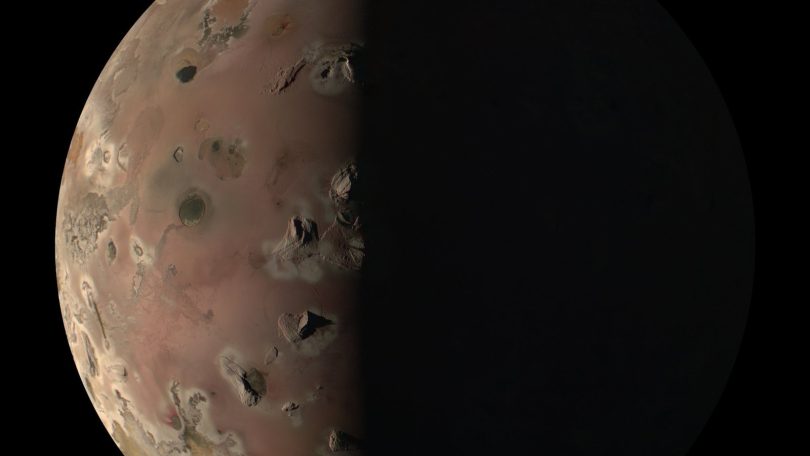[ad_1]
National Aeronautics and Space Administration’s (NASA) spacecraft Juno has captured detailed images of Jupiter’s moon Io after it came closer to the planet’s moon than any other mission has in the last two decades.

Last week, the space agency released the images taken by the spacecraft, which flew roughly 930 miles from the surface of Io.
The images, captured by the JunoCam imager, a public engagement tool that’s capable of taking visible-light colour images, showed silhouetted, dusty red sphere pockmarked by massive grayish volcanoes.
Since its launch in 2011, the orbiter has performed 56 flybys of Jupiter and documented close encounters with three of the gas giant’s four largest moons. A second ultra-close flyby of the volcanic moon is scheduled for February 3, 2024, in which the spacecraft will again come within about 930 miles (1,500 kilometers) of the surface. The aim of the mission is to collect important data about Io and its volcanism.
“By combining data from this flyby with our previous observations, the Juno science team is studying how Io’s volcanoes vary,” said Juno’s principal investigator, Scott Bolton of the Southwest Research Institute in San Antonio, Texas.
While sharing the images on the X platform, NASA said, “The JunoCam instrument aboard our #JunoMission acquired six images of Jupiter’s moon Io during its close encounter today. This black-and-white view was taken at an altitude of about 1,500 miles (2,500 kilometres).”
Io is considered as the solar system’s most volcanic body due to the immense gravity of Jupiter, in addition to the gravitational influence of the other large Jovian moons — Europa, Ganymede and Callisto.
The Jovian moons and the massive planet pull and push on Io, generating tidal forces. These highly intensive tidal forces cause the surface of Io to flex intensely enough to rise and drop by extremes as great as 330 feet (100 meters).
As a result, the surface of Io, a body roughly the same size as Earth’s moon, is covered in hundreds of active volcanoes that spew lava as high as dozens of miles above Io.
Some of these particles escape the thin, waterless atmosphere of the Jovian moon and are then trapped by the magnetic fields of Jupiter, forming a hot torus of plasma around the gas giant planet.
After the final approach to Io, Juno will reach the end of its extended mission in September 2025. At this time, the spacecraft will be intentionally crashed into the atmosphere of Jupiter, concluding its study of the gas giant and its moons.
(With inputs from NASA)
[ad_2]
Source link








